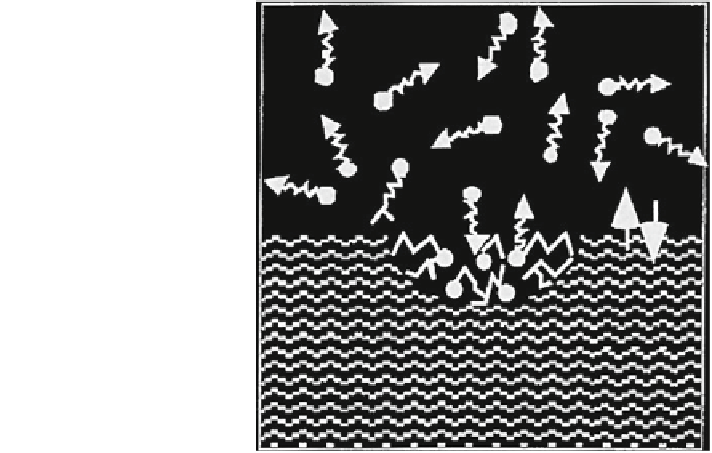Geoscience Reference
In-Depth Information
Fig. 6.2 Conceptualization
of the fugacity of a compound
in a nonideal liquid mixture
when gas and liquid phases
are in equilibrium
(Schwarzenbach et al.
2003
)
may be expected in activity coefficients for components deviating significantly
from an average mixture. Moreover, the single-impedance mass transfer coeffi-
cient determined for one component can be representative of others with similar
free liquid diffusivity but is limited when a CNAPL is incompletely characterized,
with uncertainties in bulk property values and mole fraction composition.
6.3 Ligand Effects
A molecule or an ion present in a solution in various forms is called a chemical
species or, more concisely, a species. Any combination of cations with molecules
or anions that contain free pairs of electrons is called a complex formation and
might be electrostatic, covalent, or a mixture of both. Ligands are the molecules
coordinated around a central cation atom. If a molecule contains more than one
ligand, the atoms form a multidentate complex; such complexes are called che-
lates. In a broad classification of chemical reactions, formation of these complexes
involves a coordination reaction, similar to acid-base and precipitation-dissolu-
tion reactions. Coordination reactions of cations in the subsurface aqueous solution
are exchange reactions, wherein the coordinated water molecules are exchanged
for some preferred ligands. On the basis of Bjerrum's ion association model,
Stumm and Morgan (
1996
) distinguished two types of complex species: ion pairs
formed by two ions that approach a critical distance and are no longer electro-
statically effective, and complexes resulting from the formation of largely covalent
bonds between a metal ion and an electron donating ligand.

